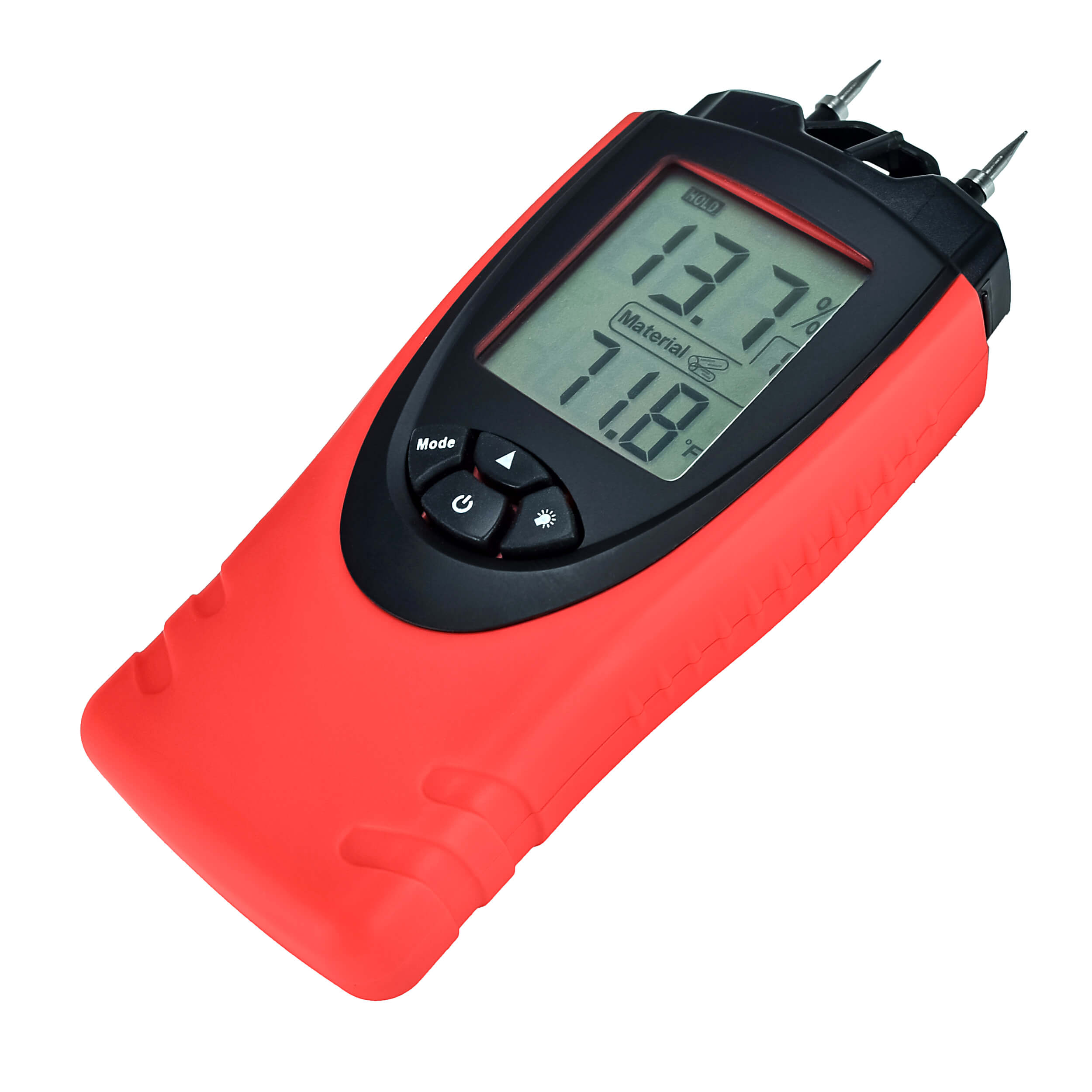Leading 10 Benefits of Using a Moisture Meter for Correct Measurements in your house
The Ultimate Overview to Moisture Meters: A Comprehensive Review and How They Can Conserve You Money
Moisture meters offer as important tools in detecting and keeping an eye on moisture material in materials, aiding in preventing costly damages and ensuring the quality of products. Comprehending the subtleties of various types of dampness meters, their applications, and the possible cost-saving advantages they use can be a game-changer for services and professionals alike.
Sorts Of Dampness Meters
Numerous sorts of dampness meters are readily available for various applications in numerous sectors. One common type is the pin-type moisture meter, which gauges the electric resistance between 2 pins inserted into a material. This kind is ideal for timber, drywall, and other structure materials. Pinless dampness meters, on the various other hand, use electro-magnetic sensing unit plates to check a bigger location without triggering damages to the material's surface area. Moisture Meter. These meters are optimal for swiftly evaluating dampness degrees in large areas such as floorings and walls.

Infrared moisture meters gauge the thermal residential properties of a product to identify its dampness material non-invasively, making them beneficial for applications where pin or pinless meters might not be ideal. Recognizing the various kinds of dampness meters readily available can assist industries pick the most ideal tool for their particular dampness measurement requirements.

Benefits of Making Use Of Moisture Meters
Moisture meters use invaluable advantages in properly keeping track of and evaluating moisture levels in varied products and atmospheres. One of the main advantages of utilizing moisture meters is the avoidance of possible damage triggered by excess dampness.
Moreover, making use of moisture meters can bring about enhanced power performance. By recognizing areas with high dampness degrees, such as leakages or bad insulation, adjustments can be made to boost energy conservation and reduce utility costs. In agricultural setups, moisture meters play a vital function in optimizing plant yields by enabling farmers to check soil moisture levels and make educated watering decisions. On the whole, the advantages of making use of moisture meters span across different markets, supplying economical options and promoting far better quality assurance practices.
How to Select the Right Dampness Meter
When picking a dampness meter, it's essential to make certain that the meter is suitable for the particular material you will certainly be screening. Various materials have varying electric residential or commercial properties that can influence wetness readings, so choosing a read this meter developed for your material is critical for precise results. By thoroughly reviewing these factors, you can select a dampness meter that fulfills your needs and provides precise dampness measurements for your tasks.
Correct Techniques for Dampness Meter Use

Expense Savings Via Moisture Meter Applications
How can the calculated utilization of dampness meters bring about considerable price savings throughout different sectors? Dampness meters play a vital function in cost savings by avoiding possible damage and making certain quality assurance in various fields. In the agriculture sector, link moisture meters aid in identifying the ideal time for gathering plants, stopping excess or over-drying wetness that can influence the final item's top quality. This specific tracking aids farmers prevent unnecessary losses and optimize their yield.
Similarly, in building and construction, wetness meters assist prevent costly problems by finding dampness levels in structure products, such as wood or concrete, which can lead to structural issues if not dealt with promptly. By determining issue areas beforehand, professionals can take restorative measures to prevent considerable repair work or replacements, inevitably conserving time and money.
Furthermore, in the food processing market, moisture meters are crucial for monitoring item quality and making certain conformity with safety and security laws. By properly measuring moisture material in food products, makers can prevent putridity, keep quality, and decrease waste, resulting in considerable cost financial savings. In general, check my reference the strategic application of moisture meters is a beneficial financial investment that can result in significant expense reductions and boosted performance across various sectors.
Final Thought
In final thought, wetness meters are important devices for measuring and discovering moisture degrees in numerous products. By making use of the best dampness meter and adhering to proper methods, customers can successfully protect against pricey problems triggered by excess moisture.
Dampness meters offer as crucial tools in identifying and monitoring moisture content in materials, aiding in avoiding expensive damages and guaranteeing the high quality of products. Infrared dampness meters determine the thermal residential properties of a material to determine its moisture content non-invasively, making them valuable for applications where pin or pinless meters might not be suitable.Dampness meters supply very useful advantages in properly assessing and keeping an eye on moisture degrees in varied materials and environments. In agricultural settings, dampness meters play an essential duty in optimizing crop returns by allowing farmers to check dirt moisture degrees and make educated watering decisions.In verdict, wetness meters are useful tools for determining and identifying moisture levels in various products.